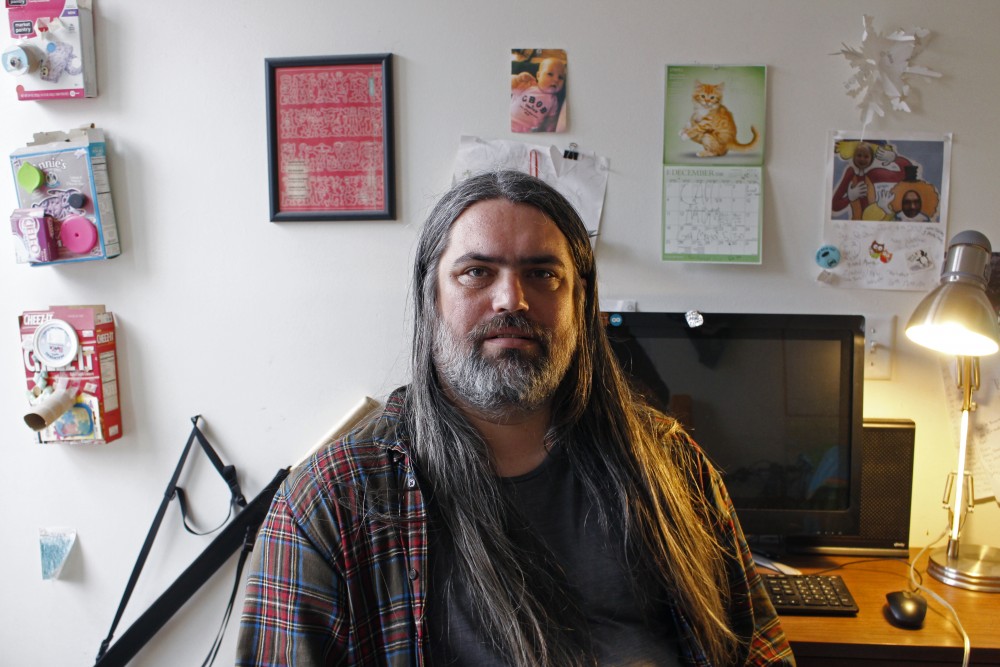A new exhibit at the Minnesota Center for Book Arts explores the vast terrain of asemic writing — an art form that utilizes abstract, illegible script.
The exhibit entitled, “Asemic Writing: Offline and in the Gallery,” will run from March 10 to May 28. More than 50 artists from around the world will have their work shown.
“Asemic writing is a wordless and open-semantic form of writing,” event curator and artist Michael Jacobson said. “The writing is more open to interpretation like abstract art. Writers want to express themselves and some things just can’t be expressed with words.”
Typically, asemic writing is wordless and illegible. While it may look similar to handwriting, each piece is purposefully impossible to read. The word asemic itself means “having no semantic content.”
“This style is in my opinion one of the most powerful means of anti-expression created in recent years,” contributing artist Marco Giovenale said. “But also of the past. The kind of asemic writing we now see has its roots in a myriad of experiments crossing the whole century.”
Up until now, the community responsible for the majority of asemic visual work has met online.
“People want to do something that’s more handwritten and expressive of the human condition. Since it’s physically there, it brings a whole new meaning,” Jacobson said. “But it’s a double edged sword because while we are influenced by the internet, we also react against it by creating things offline.”
What makes asemic writing different is that it’s a visual art form created by artists who care more about prose and what is on the page. For many artists, it’s about integrating different forms of art into their routine.
“Asemic writing allows me not to drop my main activity [writing prose pieces] while still keeping me one step before the gloss and fake realm of some contemporary art,” Giovenale said.
The work of Tim Gaze — an important figure in asemic writing history — will also be shown. Issues of Asemic Magazine, which was the first publication devoted to illegible writing in all of its forms and is edited by Gaze, will also be on display.
Like many artists, Gaze’s interests lie in calligraphy and the power of international languages.
“Particular styles of asemic writing are global and transcend language or ethnic cultures,” Gaze said. “I used to practice writing systems from other cultures such as Chinese, then cut loose and create my own pseudo-Chinese asemic writing. Using approaches like this, I’ve tried to find a truly international style.”
To many westerners, the intersection of words and meaninglessness is difficult to grasp. But connecting how handwriting and meaning affect one another is the first step in understanding asemic writing.
“I’m not aiming to be a virtuoso calligrapher,” Gaze said. “I just try to capture a raw feeling that a Chinese person, or anyone around the world, can perhaps relate to.”
What: “Asemic Writing: Offline and in the Gallery”
When: March 10 through May 28
Where: Minnesota Center for Book Arts, 1011 Washington Ave. S., Minneapolis
How much: Free








